0317 Here, is it fair to ask, “What does an exercise in critical diversity theory entail?”
Before I discuss that, I want to briefly recapitulate the situation level.
0318 First, capitalist and socialist expertise, originally depicted as situation-level nested forms, are removed from the questionable boxes of capitalism and socialism, in order to serve as templates for psychometric models. A psychometric model hybridizes value from both experts into one actuality2b. The psychometric model exhibits the relational structure of an intersection.
An intersection occurs when the actualities of two category-based nested forms constitute a single contradiction-filled actuality.
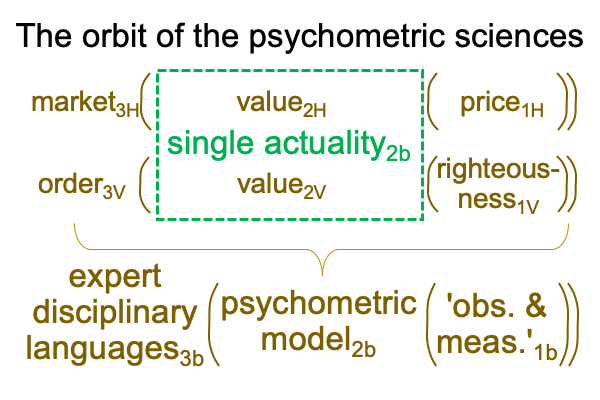
0319 The psychometric model is the moral equivalent to what ought to be for the empirio-schematic judgment of the natural sciences.
Plus, I must not forget, the empirio-schematic judgment is what ought to be for the Positivist’s judgment.
Here is a picture of the empirio-schematic judgment. Note where “models” appear.
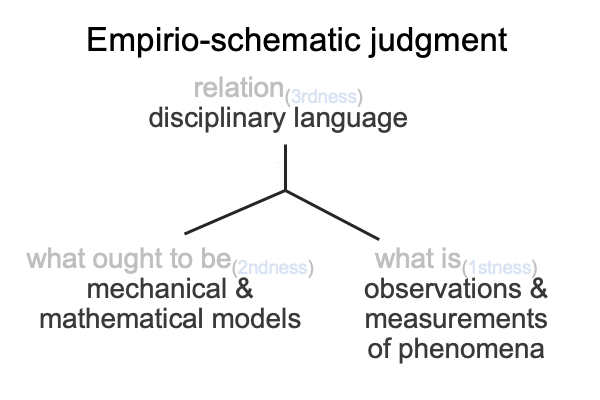
0320 In the Third Battle of the Enlightenment Gods (1945-1989), there is only one type of model at any given time. The perspective-level judgment2c call for either a capitalist or a socialist model2b.
For the Fourth Battle of the Enlightenment Gods (1989- present) there are two judgments.
Here is a picture of the new empirio-schematic judgment that will unfold into the situation-level category-based nested form.
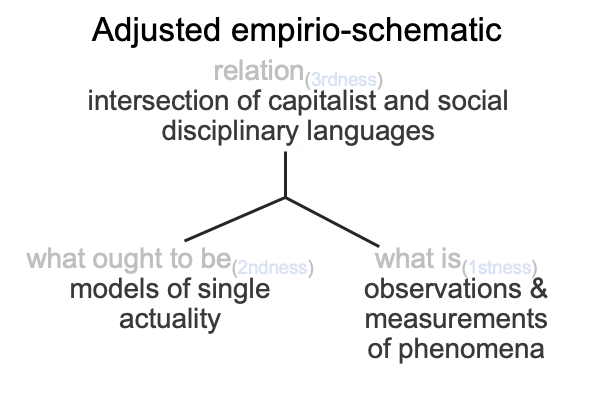
0321 The situation-level nested form for the one of scientism3c contains both capitalist and socialist expertise. Discussion of markets3 and social order3 are conducted in specific disciplinary languages3. Models of value2 are the topic at hand. Observations and measurements1 for specific disciplines concern the potentials of price1 and righteousness1.
0323 Two once-conflicting models of value2b go into each contradiction-filled psychometric valuation2b.
Here is a picture for the topic of chapter thirteen.
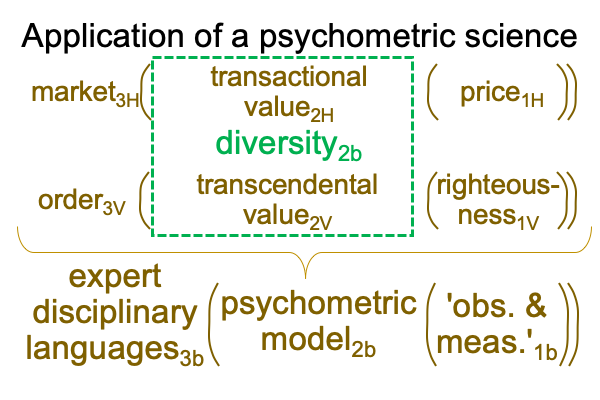
0324 Take a look at the two actualities that constitute the single actuality of “diversity”.
For capitalist expertise, the actuality is “transactional value2H“.
Why the subscript, “H”? Wait and see.
325 The more important question asks, “What practical action connects to an assessment of transactional value2H?”
0326 One answer is a financial exchange.
Financial exchange is what ultimately produces capital. Market exchange is located on the situation-level of the so-called organizationB tier. The societyC tier puts the organizationB tier into perspective. The organizationB tier situates the individual in communityA tier. The three tiers are discussed in the chapter on presence in the e-book How To Define The Word “Religion”, as well as in the ten associated Primers (by Razie Mah, available at smashwords and other e-book venues).
Now, sovereign power can influence financial exchange2H by manipulating markets3H or prices1H. Also, sovereign decrees can directly regulate financial exchange2H, thereby impacting markets3H and prices1H.
0327 What practical actions connect to assessments of transcendental value2V?
Organizational objectives2aC (or “objectsorg2aC“) actualize the potential of righteousness1aC in the normal context of institutions3aC. Institutions3aC are normal contexts3 on the contenta level of the societyC tier.
0328 What potential1bC situates institutions3aC?
Order1bC is the potential1bC that situates institutions3aC. The situationb level of the societyC tier says, “The normal context of sovereign power3bC brings the actualities of sovereign laws, decrees and actions2bC into relation with the possibility of order1bC.
Now, the same sovereign power3bC can influence financial exchange2bB and influence objectsorg2aC through direct regulation (that is, order3V) or through propaganda (that is, righteousness1V).
0329 Now, once again, it is fair to ask what does an exercise in critical diversity theory entail?
Intersections are inherently mysterious.
So diversity2b embodies a mystery.
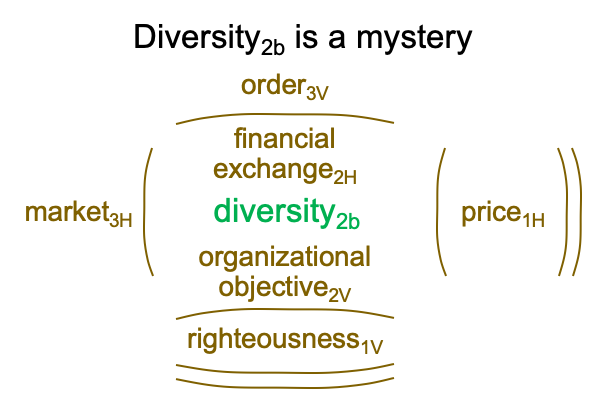
Mystery is the message underlying the word, “religion”.
